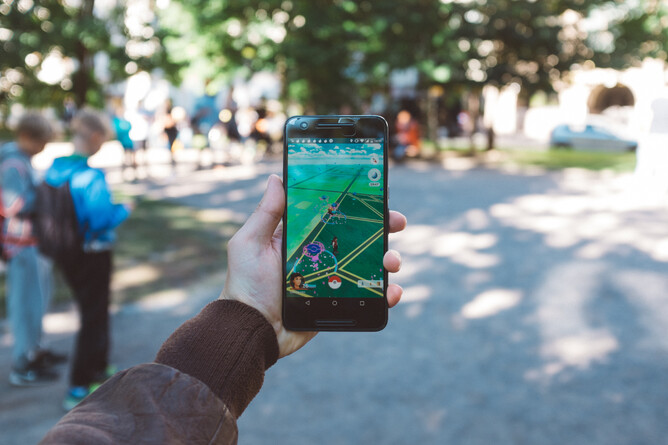Imagine a world where you didn't need to imagine. Test driving a car from your desk or cooking a meal in your new kitchen, from a showroom – all not just possible, but easily done.
With the next Clarity Mixer looking at VR, AR and AI, we've outlined a few ways you could use these exciting new technologies in your communications.
The possibilities are endless with the rapid advance of virtual reality and augmented reality - and New Zealand is punching well above our weight in the advance of these technologies.
We saw a demonstration of this in the news just in the last month with Apple announcing it is opening an office in Wellington specifically tasked with growing its AR capability. The global behemoth already recruiting several employees from Weta Digital, and Chief Executive Cook likening AR's game-changing potential to that of the smartphone.
If we're spearheading the advance of this technology, why are we not seeing more organisations in New Zealand looking to use it creatively? Already in the United States, the third-largest home builder in the country in 2016, introduced virtual reality as a primary form of showcasing homes at two of its largest developments last year, while the global market for AR products is expected to surge 80 per cent to US$165 billion by 2024, according to researcher Global Market Insights.
With this in mind here's a few ways to actively engage with the technologies and make them work for you:
Building stuff
Whether you're an architect, group home builder, construction contractor or even landscape architect, getting your clients to not just visualise the end product but actually experience it in 3D is clearly a no-brainer opportunity and a few companies in this space will no doubt be experimenting with VR already.
When you consider it can consider some developers can spend up to $1 million building a good show home, the cost of a virtual walk-through is negligible.
And don't forget AR either, as it increasingly being used like a hologram, so a client can modify features of the home such as paint colour and try out different pieces of furniture, to scale, in a digital home replica.
Crisis simulations
Operational risk is a fact of life in any business, but depending on the industry and operation, some clearly come with bigger risks than others – gas, mining, ports, heavy industrial, healthcare.
Crisis communications is critical for these sectors and simulating a scenario around a board room table just doesn't compete with the experience of virtually experiencing a fire somewhere in the plant or site.
The outcome being an improved ability to deal with threats and weaknesses that staff and incident managers might not have been ready for.
Health and Safety
With the recent introduction of new Health and Safety legislation, most businesses should be aware by now on the increased liability for company directors from harm incidents in the workplace.
This clearly puts the onus on ensuring staff and subcontractors are fully up to speed with potential hazards on site. With VR there's potential to take the usual induction into overdrive, and rather than new personnel going through the motions, actually remember what they learn thanks to the heightened sensory awareness created from a virtual simulation.
Wayfinding stories
Pokemon Go sent the world crazy for a few months last year and showcased the power of AR in the process. Ok, running around town hunting for a virtual Bulbasaur or Squirtle may not be your thing but there's definitely opportunity to apply this same model to your marketing tactics.
Everyone loves a good treasure hunt; how can you activate your brand by through AR and gamification?
Reducing pre-op nerves
Lastly, in a more interesting us of VR, Auckland DHB is now trialling a project to allow children to get a taste of the surgical ward before they actually go in to receive an operation.
The project aims to improve the overall hospital experience for kids, and possible reduce a need to prescribe anti-anxiety medication.
At the end of the day, it all boils down to storytelling and VR and AR are revolutionising the way we do this through immersing views in your world to promote a service or product. If you want to understand how your business can creatively employ these technologies to communicate get in touch with us at info@theclaritybusiness.co.nz
The possibilities are endless with the rapid advance of virtual reality and augmented reality - and New Zealand is punching well above our weight in the advance of these technologies.
We saw a demonstration of this in the news just in the last month with Apple announcing it is opening an office in Wellington specifically tasked with growing its AR capability. The global behemoth already recruiting several employees from Weta Digital, and Chief Executive Cook likening AR's game-changing potential to that of the smartphone.
If we're spearheading the advance of this technology, why are we not seeing more organisations in New Zealand looking to use it creatively? Already in the United States, the third-largest home builder in the country in 2016, introduced virtual reality as a primary form of showcasing homes at two of its largest developments last year, while the global market for AR products is expected to surge 80 per cent to US$165 billion by 2024, according to researcher Global Market Insights.
With this in mind here's a few ways to actively engage with the technologies and make them work for you:
Building stuff
Whether you're an architect, group home builder, construction contractor or even landscape architect, getting your clients to not just visualise the end product but actually experience it in 3D is clearly a no-brainer opportunity and a few companies in this space will no doubt be experimenting with VR already.
When you consider it can consider some developers can spend up to $1 million building a good show home, the cost of a virtual walk-through is negligible.
And don't forget AR either, as it increasingly being used like a hologram, so a client can modify features of the home such as paint colour and try out different pieces of furniture, to scale, in a digital home replica.
Crisis simulations
Operational risk is a fact of life in any business, but depending on the industry and operation, some clearly come with bigger risks than others – gas, mining, ports, heavy industrial, healthcare.
Crisis communications is critical for these sectors and simulating a scenario around a board room table just doesn't compete with the experience of virtually experiencing a fire somewhere in the plant or site.
The outcome being an improved ability to deal with threats and weaknesses that staff and incident managers might not have been ready for.
Health and Safety
With the recent introduction of new Health and Safety legislation, most businesses should be aware by now on the increased liability for company directors from harm incidents in the workplace.
This clearly puts the onus on ensuring staff and subcontractors are fully up to speed with potential hazards on site. With VR there's potential to take the usual induction into overdrive, and rather than new personnel going through the motions, actually remember what they learn thanks to the heightened sensory awareness created from a virtual simulation.
Wayfinding stories
Pokemon Go sent the world crazy for a few months last year and showcased the power of AR in the process. Ok, running around town hunting for a virtual Bulbasaur or Squirtle may not be your thing but there's definitely opportunity to apply this same model to your marketing tactics.
Everyone loves a good treasure hunt; how can you activate your brand by through AR and gamification?
Reducing pre-op nerves
Lastly, in a more interesting us of VR, Auckland DHB is now trialling a project to allow children to get a taste of the surgical ward before they actually go in to receive an operation.
The project aims to improve the overall hospital experience for kids, and possible reduce a need to prescribe anti-anxiety medication.
At the end of the day, it all boils down to storytelling and VR and AR are revolutionising the way we do this through immersing views in your world to promote a service or product. If you want to understand how your business can creatively employ these technologies to communicate get in touch with us at info@theclaritybusiness.co.nz

